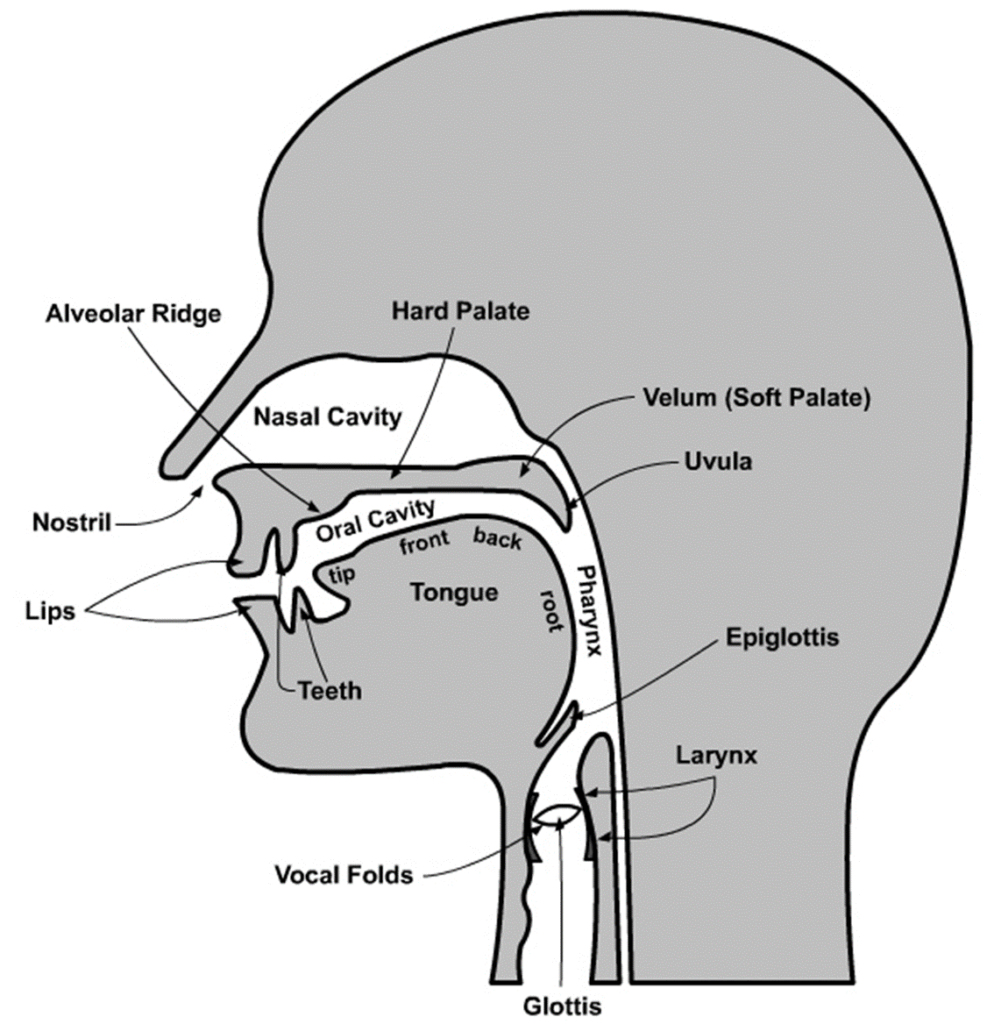American English Phonetics
Another American English Faculty Project
5.1 The lungs and the larynx
Before we begin to speak, we first breathe in, taking in sufficient air to produce an utterance of reasonable length. Instead of simply letting go of the muscular tension and allowing our lungs to collapse, pushing the air from our lungs (which is what we could do if we were breathing normally), we slowly ease up on the muscular tension, thereby slowing down the exhalation phase. This artificially extended period of pressure from our lungs is used to produce speech. Because the airstream we are using is generated with the help of the lungs, speech sounds produced in this way are called pulmonic, and because it is the outgoing rather than the incoming air we use, these speech sounds are called egressive. All speech sounds of GA and AN are pulmonic egressive. The amount of speech produced with a single outgoing airstream is called a breath group.
The first important organ the airstream will meet on its path from the lungs is the larynx (Du: strottenhoofd). The outward part of this organ can be felt – and, especially in men, be seen – at the front of the neck (the Adam’s apple). The larynx is essentially a valve, which can be opened and closed by moving two thickish flaps that run from back to front apart or together (see Fig. 1). These flaps are primarily there to prevent food or saliva from entering the lungs, but because they also have a function in speech they are known as the vocal cords (or vocal folds).
There is an additional valve, called the epiglottis, positioned above the larynx where the root of the tongue begins. It normally points upward, but it flaps down to channel food and saliva into the esophagus – the tube behind the larynx leading to the stomach – when we swallow.

